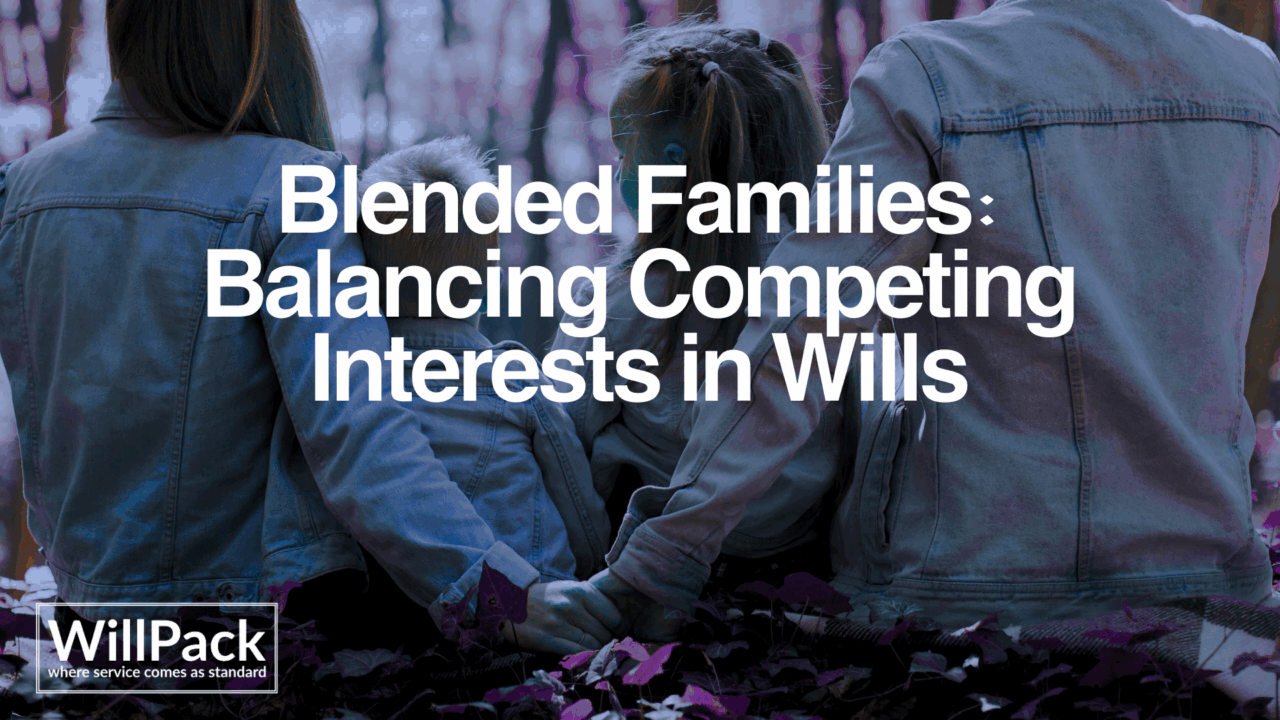Blended families present unique challenges in succession planning. Drafting wills for these families requires careful consideration of competing interests, obligations, and the risk of future disputes. This article examines the legal context, practical implications, and best practices for balancing these interests.
Challenges Unique to Blended Families
Blended families typically include spouses, civil partners, or cohabitees, as well as children from previous relationships and, in some cases, children born to the current relationship. This complexity often gives rise to competing interests, particularly regarding the distribution of assets upon death. Without a will, there is a risk of disputes, unintended disinheritance, and litigation.
For example, a testator may wish to provide for a current spouse while also safeguarding the inheritance of children from a prior relationship. If this is not clearly detailed in a will, the rules of intestacy may apply, which may not reflect the testator’s wishes.
Limitations of Intestacy
If a person dies without a valid will, their estate is distributed according to the intestacy rules set out in the Administration of Estates Act 1925. These rules prioritise spouses, civil partners, and biological or adopted children, but do not recognise stepchildren or unmarried partners. This can result in unintended consequences for blended families.
Key Considerations When Drafting the Will
To avoid the pitfalls of intestacy and ensure that all beneficiaries are provided for, it is essential to draft a clear and comprehensive will. The following considerations are particularly important for blended families.
Balancing Immediate and Long-Term Needs
A common concern is how to provide for a surviving spouse/partner while also protecting the inheritance of children from previous relationships. One solution is to use trusts, which can allow the survivor to benefit from certain assets (such as the family home or income from investments) during their lifetime, with the assets passing to the children upon the spouse’s death.
Anticipating Potential Claims
Even with a will in place, certain people including spouses, former spouses, children, and those treated as children of the family may be able to make a claim against the estate if they believe reasonable financial provision has not been made for them under the Inheritance (Provision for Family and Dependants) Act 1975. Clients should be advised of this risk and consider what could be done to minimise that risk.
Reviewing and Updating the Will
Family circumstances can change over time, particularly in blended families. It is advisable to review and update the will regularly, especially after significant life events such as marriage, divorce, the birth of children, or the acquisition of new assets.
Suitable Executors and Trustees
Appointing the right executors and trustees is crucial, particularly where there may be competing interests between beneficiaries. The appointment of neutral or professional executors/trustees can help ensure impartial administration and reduce the risk of conflict, especially where trusts are established for the long-term benefit of the family.
Planning for Future Relationships
Blended family dynamics can change, particularly if a surviving spouse/partner remarries or enters a new relationship. Consideration should be given to the risk of “sideways disinheritance,” where assets intended for the testator’s children could ultimately pass to a new spouse or their family. Trusts in the will can help mitigate this risk.
Communicating Intentions and Managing Expectations
Open communication with family members can help manage expectations and reduce the risk of disputes after death. Clients should be encouraged to discuss the contents of the will and the reasons for particular decisions, as this can minimise misunderstandings.
Trusts to Consider
There are several different trusts which may be appropriate for blended families, including:
- Life Interest Trusts: These allow a spouse or partner to benefit from an asset during their lifetime, with the asset passing to the children upon their death. This structure ensures the survivor is provided for while protecting the inheritance of the children.
- Discretionary Trusts: These provide flexibility by allowing trustees to determine how and when assets are distributed among a class of potential beneficiaries, which is particularly useful in complex or evolving family situations.
- Flexible Life Interest Trusts: These provide the survivor with a life interest initially but continue as a discretionary trust on the survivor’s death. The trust also allows the trustees to transfer capital to the children or other beneficiaries while the survivor is alive. This structure offers both security for the surviving spouse and flexibility to meet the needs of other family members, helping to balance competing interests in blended families.
Conclusion
Blended families require careful succession planning that reflects their unique dynamics. A well-drafted will, supported by appropriate will trusts, can help ensure that all loved ones are considered and protected, and that conflict is minimised.
If you have subscribed to our Quiz Membership 2025, please find this article’s quiz here. You must be signed into the partner area of our website to access this.

